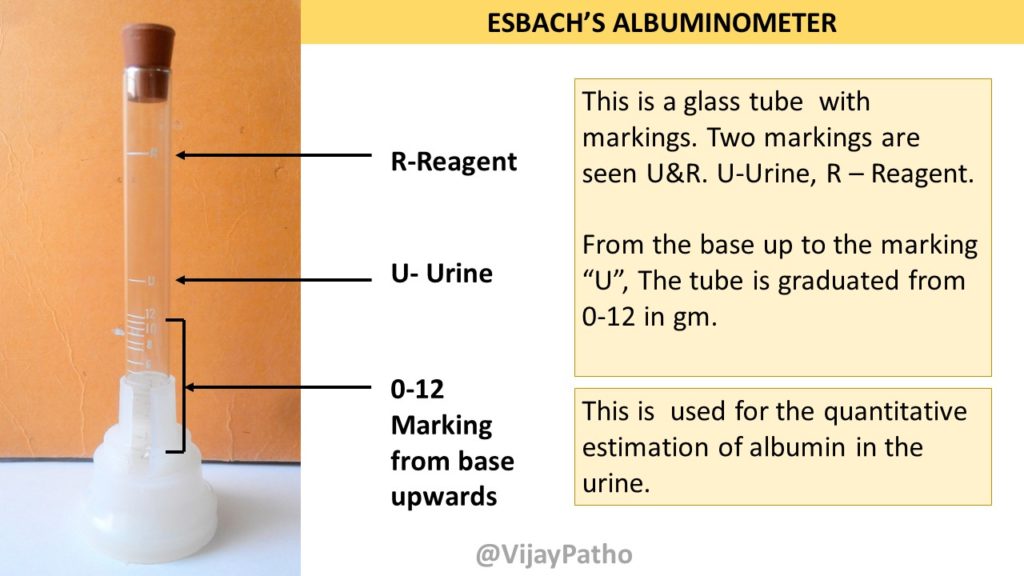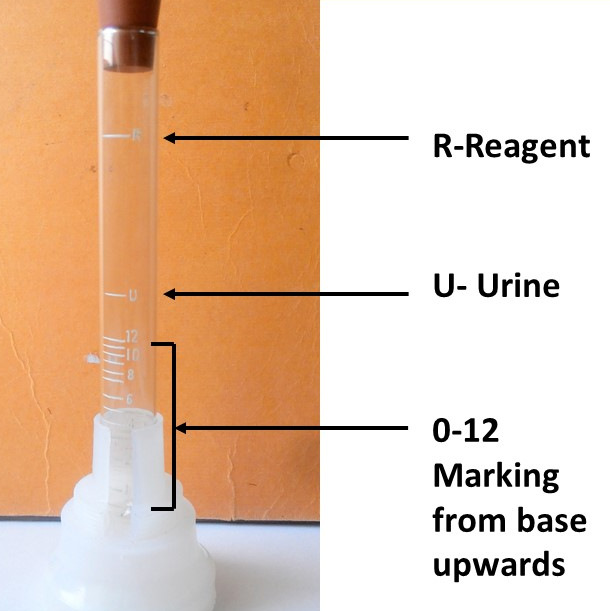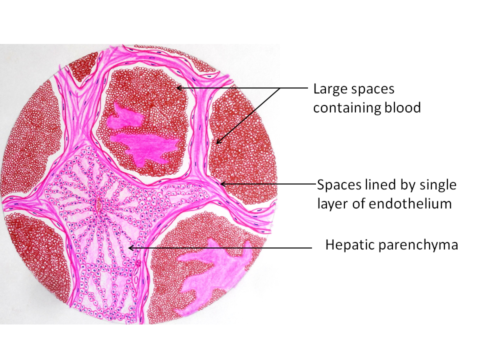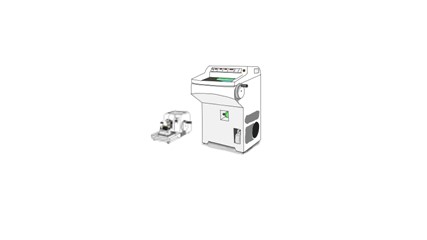
ESBACH’S ALBUMINOMETER
1. Describe the instrument Esbach’s Albuminometer
This is a glass tube with markings.
Two markings are seen U&R. U-Urine, R – Reagent.
From the base up to the marking “U”, The tube is graduated from 0-12 in gm.
2. What are the uses of Esbach’s Albuminometer
This is most widely used for the quantitative estimation of albumin in the urine.
The procedure is very simple, but crude method of estimation.
3. What is the composition of Esbach Reagent
The reagent is composed of picric acid and citric acid in water. This is prepared by adding 5gms of picric acid and 10 gms of citric acid into 500 ml of water.
4. What is the principle behind this test
The albumin in the urine combines with the picric & citric acid in the Esbach reagent and forms a precipitate which is measured quantitatively.
5. Describe the procedure to estimate the albumin in urine by Esbach’s albuminometer
a. Fill the Albuminometer with urine up to the mark”U”
b. The fill the Esbach reagent up to mark “R”
c. Stopper the tube
d. Mix the contents well
e. Keep this tube in the standing position for 24 hrs
f. Look for precipitation and the reading is noted
g. Albumin is expressed in gms/L of urine
6. What are the precautions to be taken before conducting this test.
Make sure that the urine is acidic. As the albumin precipitates well in acidic urine.
7. What is microalbuminuria (micro proteinuria)?
It is defined as urinary excretion of 30-300 mg/24 hrs of albumin in urine. Sensitive strip tests are available to detect the presence of very low amount. This test is of use in identifying cases of early kidney damage in diabetes mellitus and it is an independent risk factor for cardiovascular disease in diabetes mellitus.
To know more about urine analysis CLICK HERE











Recent Comments